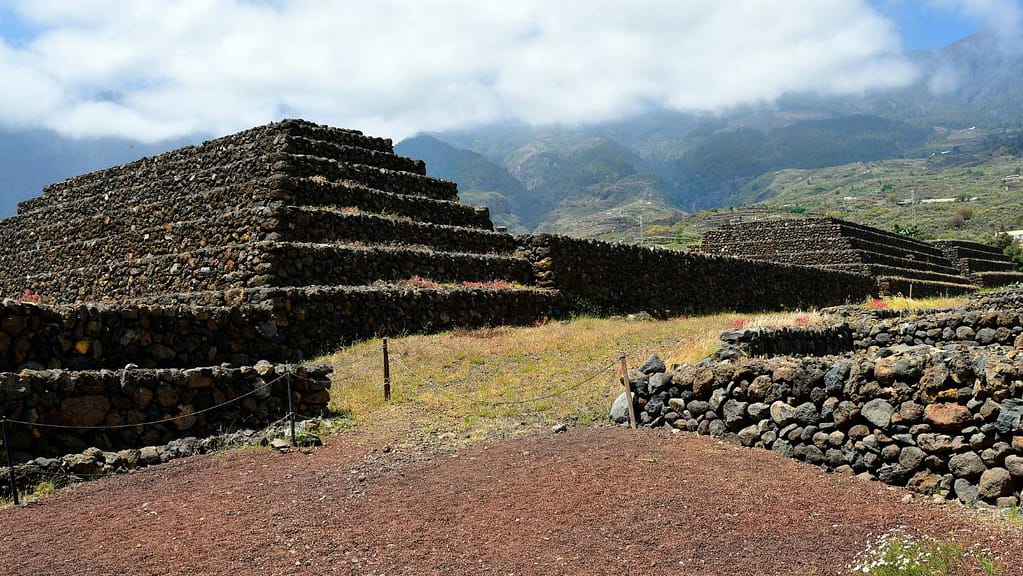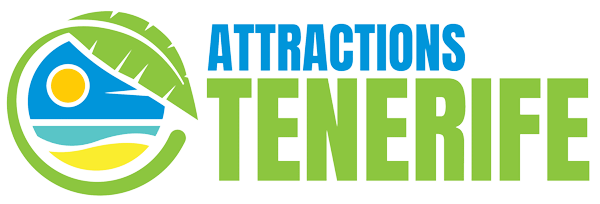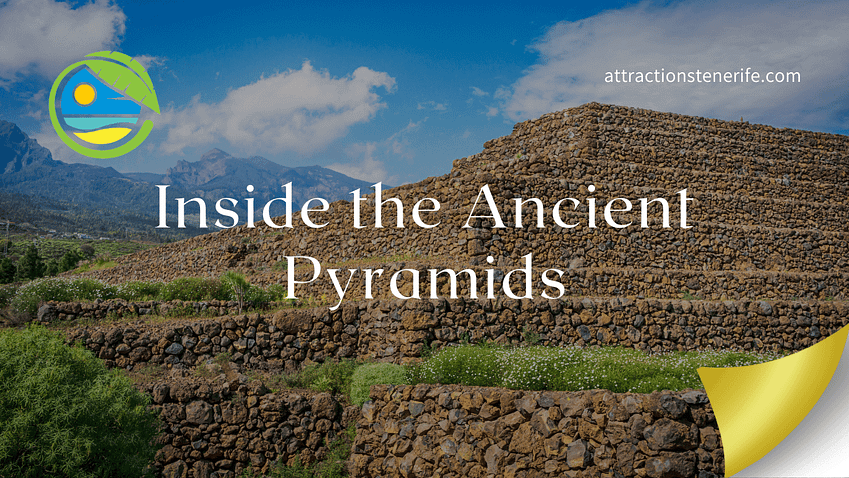Estimated reading time: 9 minutes
Güímar Pyramids in Tenerife: Uncovering the Mysteries of the Ancient Structure
Discover the ancient structures of the Pyramids of Güímar in Tenerife. Uncover the mystery of the Guanches and the ancient civilizations of the Canary Islands!
I recently had the opportunity to visit the Pyramids of Güímar on the island of Tenerife in the Canary Islands, Spain.
These six rectangular pyramid-shaped structures are built from lava stone without the use of mortar and are located in the district of Chacona, part of the town of Güímar.
As an archaeology enthusiast, I was immediately intrigued by the history and mystery surrounding these pyramids.
What makes the Güímar Pyramids so fascinating is the fact that their origins are not entirely clear. Some believe that they were built by the Guanches, the original inhabitants of the Canary Islands, while others think that they may have been constructed by ancient civilizations from outside the region.
The Ethnographic Park at Güímar has been built around the pyramids and includes a museum that showcases the results of investigations carried out by archaeologists around the world, led by the famous Norwegian anthropologist Thor Heyerdahl.
History of the Güímar Pyramids in Tenerife

Discovery of the Pyramids
I first learned about the Güímar Pyramids during my visit to Tenerife in the Canary Islands. The pyramids are located in the town of Güímar and were discovered by Thor Heyerdahl in 1991.
Heyerdahl was a Norwegian explorer who was famous for his expeditions and theories about ancient civilizations.
The Güímar Pyramids is a stepped pyramid that is made up of six levels. The pyramids are approximately 64,000 square meters in size and is made up of volcanic stone.
When Heyerdahl first discovered the pyramids, it was covered in soil and vegetation. It was only after he cleared away the soil and vegetation that the pyramids were revealed.
Theories about its Construction
There are many theories about the construction of the Güímar Pyramids. Some historians believe that the pyramids were built by the Guanches, who were the indigenous people of the Canary Islands.
The Guanches were known for their stone structures and were skilled at carving and shaping stone.
Other historians believe that the pyramids were built by a group of people who were not native to the Canary Islands. These people may have been from North Africa or South America and may have brought with them the knowledge of pyramid construction.
Despite the many theories about the construction of the Güímar Pyramids, there is still much that is unknown about its origins.
What is clear, however, is that the pyramid is a remarkable feat of engineering and a testament to the ingenuity of the people who built it.
Thor Heyerdahl and the Pyramids of Güímar, Tenerife

Heyerdahl’s Expeditions
When I first heard about the Pyramids of Güímar in Tenerife, I was immediately intrigued. But what caught my attention was the fact that they were studied by Thor Heyerdahl, a Norwegian adventurer and ethnographer.
Heyerdahl is best known for his expeditions and theories about the origins of ancient civilizations.
Heyerdahl first came to Tenerife in the 1980s and became fascinated by the six pyramids located in the Güímar Valley.
He believed that the pyramids were not just random piles of stones, but rather, they were evidence of a pre-Columbian connection between the ancient cultures of the Mediterranean and the Americas.
The Ra II Expedition
Heyerdahl‘s interest in the Pyramids of Güímar was part of a larger research project that he undertook in the 1970s. He wanted to prove that ancient civilizations could have crossed the Atlantic Ocean long before Columbus.
To test his theory, Heyerdahl built a boat called the Ra II, which was modelled after ancient Egyptian vessels.
In 1970, Heyerdahl and his crew set sail from Morocco and crossed the Atlantic Ocean, reaching Barbados after 57 days. The success of the Ra II expedition gave Heyerdahl the credibility he needed to continue his research into the origins of ancient civilizations.
Heyerdahl’s Theories
Heyerdahl believed that the Pyramids of Güímar were built by a pre-Columbian civilization that had connections to ancient Egypt and other Mediterranean cultures. He observed that the pyramids were aligned with the summer solstice, just like the pyramids in Egypt.
Heyerdahl also noticed similarities between the pyramids in Güímar and the stepped pyramids of Central America. He believed that the pre-Columbian cultures of the Americas had a common origin with the ancient cultures of the Mediterranean.
Heyerdahl‘s theories about the Pyramids of Güímar were controversial, but they sparked a renewed interest in the study of ancient civilizations. Today, the Pyramids of Güímar are a popular tourist attraction and a testament to the enduring legacy of Thor Heyerdahl’s research.
As a researcher at the University of La Laguna, I find Heyerdahl‘s work on the Pyramids of Güímar to be fascinating and thought-provoking. The pyramids are a testament to the ingenuity and creativity of our ancestors, and they remind us of the importance of studying our shared cultural heritage.
The Pyramids of Güímar Ethnographic Park

As I walked through the Güímar Pyramids Ethnographic Park, I was struck by the unique beauty of the stone structures and the rich history they represent.
This park, located on the southeast coast of Tenerife, is home to six stepped pyramids made of lava stone, each about four meters high.
The origins of these pyramids are not entirely clear, but they are believed to have been built without the use of mortar, using only the precision of the stone cutters who constructed them.
Exhibits and Exhibition Spaces
The park includes a museum that showcases the results of investigations carried out in the pyramid complex, as well as exhibits on other pyramids around the world and the ancient civilizations that built them.
The museum also features interactive displays that allow visitors to learn about the cultural significance of the pyramids and the people who built them.
Stone Structures and Chacona
In addition to the pyramids, the park includes other stone structures that offer a glimpse into the lives of the people who once inhabited the area. One of the most notable of these structures is the Casa Chacona, a traditional Canarian house that has been restored to its original state.
This house provides visitors with a unique opportunity to see how people lived in the area before the arrival of the Spanish.
Auditorium and Café
The park also features an auditorium that hosts cultural events and performances throughout the year. Visitors can enjoy live music, theatre, and dance performances in this beautiful outdoor space.
When it’s time for a break, the park’s café offers a variety of refreshments and snacks, including traditional Canarian cuisine.
Tenerife’s Güímar Pyramids and the Solstices

As I explored the Pyramids of Güímar in Tenerife, I couldn’t help but notice the unique alignment of the pyramids with the sun during the solstices. The solstice is a significant astronomical event that occurs twice a year, marking the longest and shortest days of the year.
The alignment of the pyramids with the sun during the solstices is a testament to the advanced knowledge of the ancient civilizations that built them.
Summer Solstice
During the summer solstice, the sun rises directly above the highest pyramid. This alignment is a clear indication of the importance of the sun in the culture of the ancient Guanches, the indigenous people of the Canary Islands.
The Guanches believed that the sun was a god and worshipped it accordingly. The alignment of the pyramids with the sun during the summer solstice is a testament to their devotion to this deity.
Winter Solstice
During the winter solstice, the sun sets directly between two of the pyramids. This alignment is similar to the one observed at Easter Island, which is located in the middle of the Atlantic Ocean.
The alignment of the Güímar Pyramids with the sun during the winter solstice is yet another indication of the advanced knowledge of the ancient civilizations that built these structures.
The significance of the solstices in the culture of the ancient Guanches is further highlighted by the fact that the pyramids were built without the use of mortar. This allowed the pyramids to expand and contract with temperature changes, ensuring that they remained aligned with the sun during the solstices.
The Pyramids of Güímar in Tenerife Today

As I visit the Güímar Pyramids today, I am impressed by how well-preserved this ancient structure is.
The pyramid is located in the district of Chacona, part of the town of Güímar on the island of Tenerife in the Canary Islands, Spain.
It is a rectangular pyramid-shaped, terraced structure built from lava stone without the use of mortar.
Public Access
The pyramids are open to the public, and visitors can explore the pyramids and its surroundings. The Pyramid Park offers a range of activities and exhibitions that provide insight into the history and culture of the Canary Islands.
The park is open every day from 10 am to 6 pm, except on 25th December and 1st January.
Poison Garden
One of the unique attractions of the Pyramid Park is the Poison Garden. This garden features a range of poisonous plants from around the world, and visitors can learn about the history and uses of these plants.
The garden is a fascinating and educational experience for visitors of all ages.
Plan Your Vacation with these useful links
- Find a flight
Kiwi.com – Helping you to find the cheapest airline tickets.
- Find an accommodation
Welcome to Tenerife. Enter your check-in date and choose from 9628 properties with Booking.com!
- Order taxi transfers from airports and hotels
Kiwi Taxi. Immediate departure, the driver meets you, pay online or in cash.
- Book Your Activities
Top sights you can’t miss in Tenerife! GetYourGuide.
- Rent a Car: Search, Compare, Save
Join now the many satisfied customers of Rentalcars.com – the leading car rental comparison website around the world. Only 3 steps separate you from “four wheels”!
- Ekta – is a new-generation insurance company that combines competitive prices with a high level of service.
You will receive your insurance policy by email within 2-3 minutes. There is a multilingual technical support chat 24/7.

